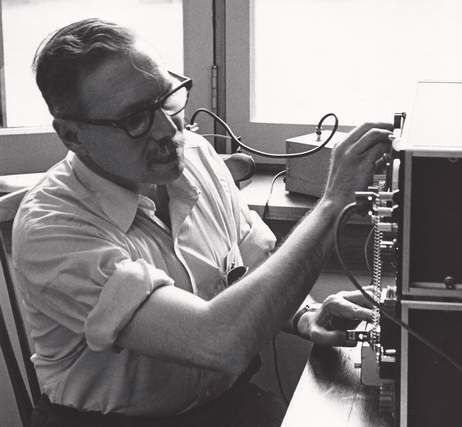Villchur a key figure among ‘audio pioneers’
Published 5:00 am Wednesday, October 19, 2011

- Edgar Villchur, who went from repairing radios in his New York City shop to inventing ground-breaking audio equipment and hearing aids, died Monday at his home in Woodstock, N.Y. He was 94.
Edgar Villchur, whose invention of a small loudspeaker that could produce deep, rich bass tones opened the high-fidelity music market in the 1950s to millions of everyday listeners, died Monday at his home in Woodstock, N.Y. He was 94.
Audiophiles have hailed Villchur as a seminal figure in the field. In its 50th-anniversary issue in 2006, Hi-Fi News ranked him No. 1 among the “50 Most Important Audio Pioneers.”
Trending
John Atkinson, the editor of Stereophile magazine, credits him with bringing hi-fi into the home.
“Villchur’s development of what he called the acoustic suspension woofer made it possible for music lovers to buy loudspeakers that were domestically acceptable,” Atkinson said in a 2009 interview. “A guy’s wife could accept their presence on the bookshelf in the living room.”
Before Villchur’s invention of the AR-1 loudspeaker in 1954, producing high-fidelity bass tones required speakers large enough to generate the long wavelengths of the deep notes. Some speakers were as large as a refrigerator. In the cabinet, mounted toward the front, would be what hi-fi specialists call the drive unit: a cone-shaped device activated by a magnet and a coil of wire to produce the sound.
In the early days of hi-fi, manufacturers were not fully aware of the relationship between the drive unit and the acoustic role played by the cabinet itself, and they sometimes left the rear of the cabinet open.
Villchur realized if the cabinet were completely sealed, the air trapped inside would act something like a spring that would control the cone’s vibrations, greatly enhancing the drive unit’s low-frequency performance.
By 1966, according to Stereo Review magazine, Villchur’s company, Acoustic Research, was the leader in the nation’s speaker market, with a share of just over 32 percent.
Trending
One of Villchur’s breakthrough speakers was placed on permanent exhibit at the Smithsonian Institution in 1993.
Villchur also made two other advances that greatly improved high-fidelity performance.
He developed one of the first dome tweeters, a drive unit that produces high frequencies. Before the tweeter, high frequencies were emitted by the woofer, but with very poor sound quality. Instead of the cone, Villchur (and other innovators working independently of one another) devised small dome-shaped diaphragms that proved optimal for producing high frequencies.
Edgar Marion Villchur was born in Manhattan on May 28, 1917, the only child of Mark and Mariam Villchur, who had emigrated from Russia. His father was editor of a Russian-language newspaper, his mother a biologist.
It was his service in World War II that sparked Villchur’s fascination with sound and electronics. He had graduated from City College of New York in 1938, then earned a master’s degree in education there two years later. But within a year he was drafted into the Army Air Forces and was trained as an electronics technician. For most of the next five years, while rising to captain, he was responsible for his squadron’s radio operations in the Pacific.
Villchur also started the Foundation for Hearing Aid Research in Woodstock, where he developed a prototype of the multichannel compression hearing aid that has become an industry standard.








